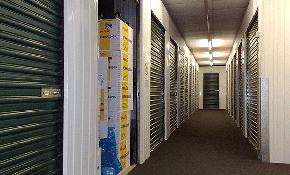BOSTON-For all the attention the senior housing sector is receiving from investors, there is a downside. So points out Meghan Gorman of locally based Torto Wheaton Research. The senior research analyst says that while the sector may be a higher-yielding alternative to multifamily investment and can profit from the aging baby boom population, there are certain segments of the market that are riskier than others. Namely, traditional nursing home facilities have increased risk profiles, she maintains. These challenges, Gorman says, are “enhanced by the flipside of the demographic equation; namely, the strain put on Medicaid programs by a shrinking labor force.”
Looking at the numbers alone, the investment potential for seniors housing product is compelling–the US Census Bureau expects those over age 65 to increase in number from 35 million in 2000 to more than 86.7 million by 2050. The population of those over 86.7 will nearly quintuple to 20.9 million over that same period.
According to Gorman, “One of the most salient threats to traditional senior housing product is the increasing preference among seniors to age in place.” As such, there has been a shift toward in-place care in both the private and public sectors, the latter being federally financed with such programs as Medicaid and the Program for All-Inclusive Care for the Elderly (PACE). The rise of such options as continuing care retirement communities, traditional retirement communities and inner-city home health services, as well as state programs including HCBS waivers and HUD affordable assisted living grants, as also added pressure on the institutionalized senior living space.These factors, along with the belief that seniors should live independently as long as possible, poses a challenge to developing mixed independent and assisted living facilities, since seniors in independent living “would prefer not to see closely located assisted living facilities as their next step.”
Seniors with resources, spouses or adult children generally have the means to defer entry in assisted living and skilled nursing properties as long as possible. “Among these groups, independent living facilities would be the more popular choice and brings with it the advantage of having a low variable component of NOI and independence from state or federal reimbursements, which are subject to rulings and interpretations,” says Gorman. She adds that not only are such facilities least complicated to design and build and require low maintenance since they don’t go through as much wear-and-tear, but they also have lower operating costs since the residents, for the most part, are healthy and active and don’t need extensive care. Most of the revenues for such product come from monthly leases, and earnings can be upped through the addition of amenities.
In terms of pay structure, most of those living in independent-living facilities pay privately. Therefore, more affluent, married seniors tend to choose facilities with low care components, including independent living and CCRCs. Often, the only option for those without resources is assisted living or skilled nursing, though states and the Fed are working to change that. “The most interesting trend is that whether seniors enter intense care facilities as private pay or Medicaid pay, they all eventually end up as Medicaid pay patients, and in a relatively short amount of time,” Gorman points out, citing a 1998 study that “showed how the spend-down rate of personal assets was higher and faster in facilities with a high proportion of entering private pay patients.”
The point, she says, is that a high percentage of private-pay patients will not stabilize net operating income at assisted living or skilled nursing facilities. Because all patients inevitably become Medicaid recipients, these properties face an inordinate amount of risk since that program is coming up against financial strain due to a shirking labor force.The more a property relies on Medicaid, the more variability in cash flows, explains Gorman. The variable service component share of monthly fee income depends on the type of facility, with the share rising along the care spectrum from 5% to 10% for independent living, all the way up to 75% for skilled nursing/Alzheimer facilities. At the same time, NOI growth decreases along the same spectrum. CCRCs have the highest year-over-year NOI growth–26% between 2005 and 2006–followed by independent living at 18% and then assisted living at 8%, according to the 2006 State of Senior Housing Survey administered by the American Seniors Housing Association.
“The risks of intense care facilities can be attributed to the complexities of Medicaid reimbursement, labor shortages in nursing aides and healthcare support staff, and the amount of customization and maintenance required at intense care facilities,” says Gorman. However, the level of risk varies by state. Areas with high elderly populations have high Medicaid reimbursement rates–Arizona, for instance, has a rate of 65.77%, while New York has the national minimum of 50%.
Demographics, too, may work against traditional seniors housing product, says Gorman. The need for qualified aides and healthcare support–typically entry-level positions–is so great that the demand exceeds supply, according to the Bureau of Labor Statistics. “As a result, ALF and SNF in some states need to increase wages to retain staff or employ expensive temporary nursing agencies to fill gaps,” she states.
Also, the level of build-out for a facility–amenities, safety features and the like–can cost a chunk of change, as do the higher liability insurance and labor costs of the asset, particularly in skilled nursing and Alzheimer care centers. “Though the maze of entitlements, state-level need demonstration, and Medicaid complexities do create high barriers to entry at the intense care-level of the market, the impact to pricing power and returns does not outweigh the escalating, volatile costs of operating assisted living, skilled nursing and Alzheimer’s care facilities,” says Gorman.
These risks are playing themselves out in the capital markets, with cap rates for age-restricted apartments the lowest at 7.1%, and skilled nursing facilities the highest, at 12.1%, in 2007. As a result, Gorman suggests that investors diversify their portfolios when it comes to senior housing investment. “Investors today will recognize that the demographics that make senior housing a slam dunk will favor new aging-in-place product types to the traditional nursing home facilities of the past,” she says.





 Copyright © 2024 ALM Global, LLC. All Rights Reserved.
Copyright © 2024 ALM Global, LLC. All Rights Reserved.











